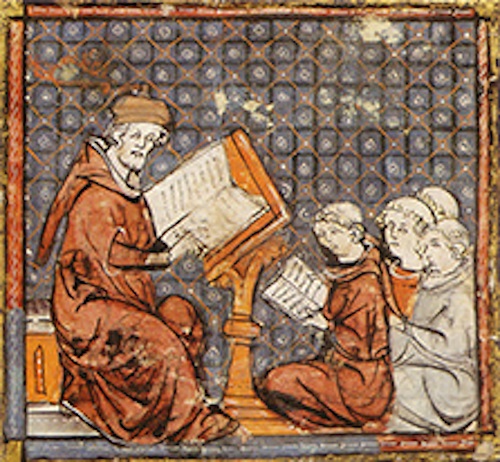1287

Despite writing the Historia on commission of Matteo della Porta, a theology teacher and bishop of Salerno (1263-1272), Guido declares he interrupted his work during the first chapter when the bishop died and only resumed it in 1287, writing the other 34 chapters. His account will go on to gain great popularity because of his particular choices. As an educated man Guido addresses his work to an educated public: “qui grammaticam legunt” (who can read), as he recites in the Historia. His Latin is far from elegant, but he takes care to display his erudition and familiarity with ancient authors in every chapter of his book. In fact, his ambition was to write a book of history rather than of literature, and to demonstrate his knowledge of classical things. Furthermore, as we have seen, he constantly reverted to the books of Dares and Dictys themselves. He represents on the one hand a strange mixture of medieval superstitions and prejudices, the most curious of which are his repeated misogyny outbursts; on the other hand, he makes a genuine effort not to become submerged in false traditions for the sake of literary effect. His work is more prosaic and less imaginative, but at the same time there is a tendency, however slight, to restore to the medieval tale a kind of classical setting. Thus the Historia is a valiant attempt to return to a better set of values, acting as a step towards bringing back the classical tradition. It should be remembered that Guido’s extreme pro-Trojan attitude was shared by all his contemporaries, including Dante Alighieri: in his Commedia the Trojans, with the exception of Paris, are found among the just, while Homer’s Achaean heroes are condemned to linger in hell. Because it was written in Latin — the international language which was more readily understood than Benoit’s French — Guido’s book proved to be even more influential than its model. Its success all over Europe was phenomenal. It was translated into practically every European language, and the impact of these translations can be traced through the ages.

